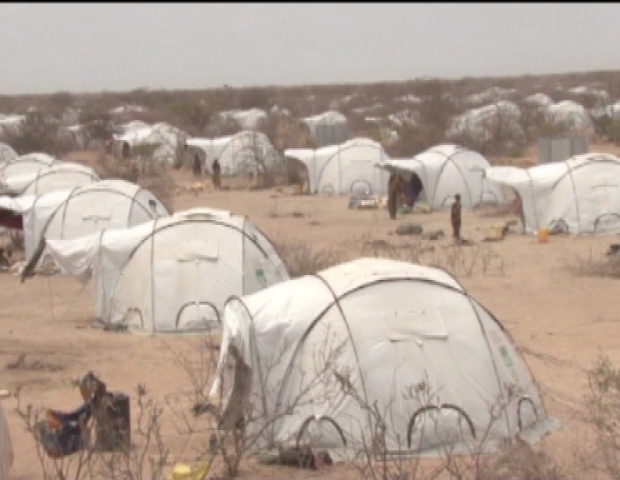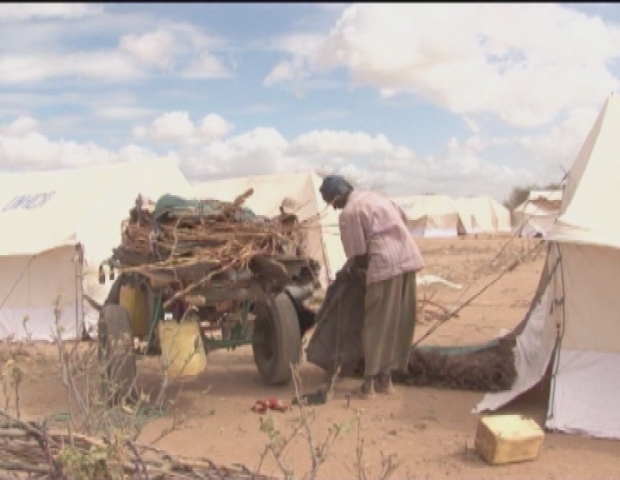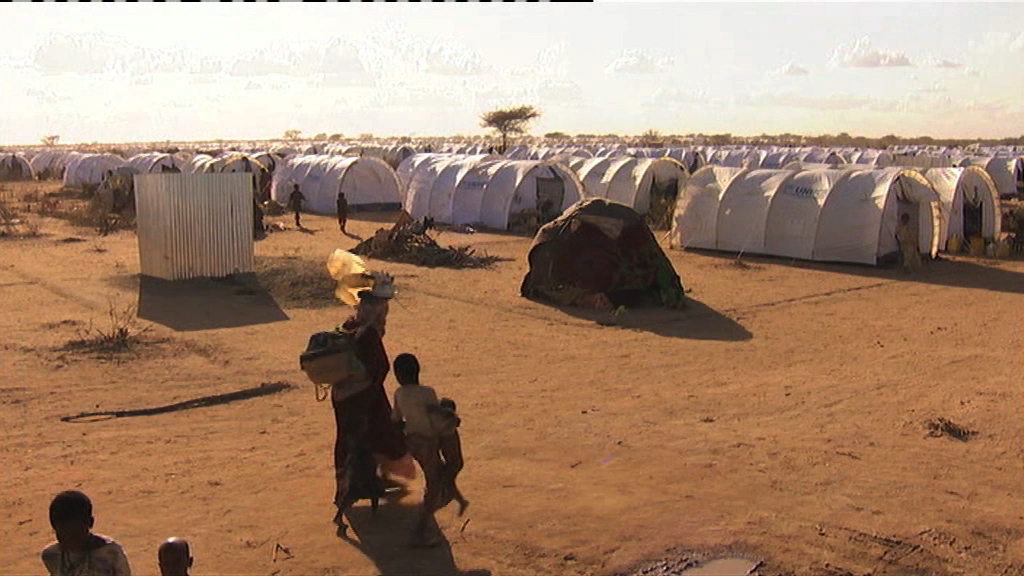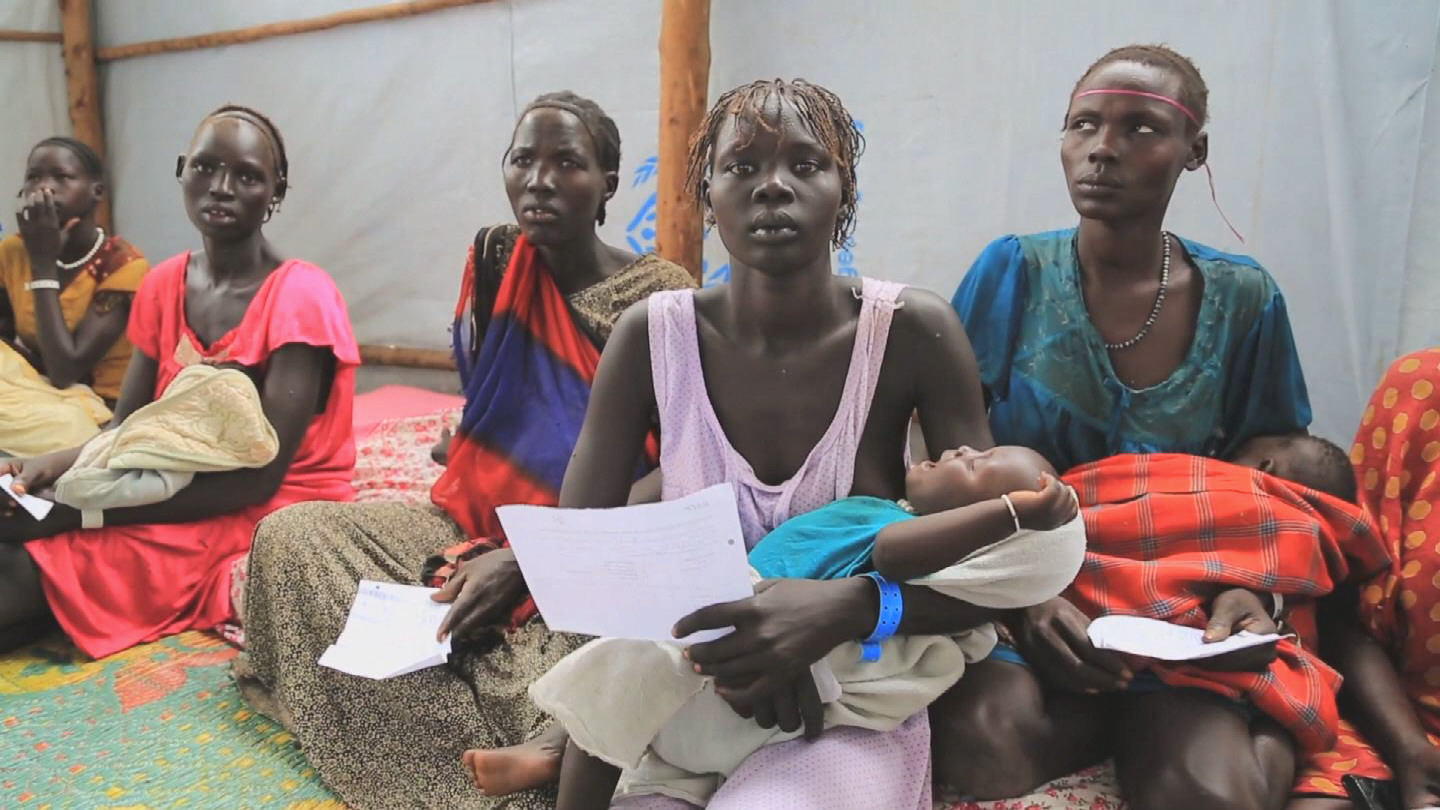KENYA / WATER SUPPLY
Download
There is no media available to download.
Share
STORY: KENYA / WATER SUPPLY
TRT: 2.06
SOURCE: UNICEF
RESTRICTIONS: NONE
LANGUAGE: TURKANA / ENGLISH / NATS
DATELINE: 14 AUGUST 2011, KERIO CENTRE, TURKANA, NW KENYA
1. Various shots, villagers at water hole scooping out drinking water
2. Various shots, 8 year old Konzi Atabo carrying water container on head
3. Tilt up, Esther Nabulon, lying sick with malaria
4. SOUNDBITE (Turkana) Esther Nabulon, Konzi’s Mother:
“The water we get is very bad and it brings us sickness because it is not very clean.”
5. Various shots, family members and villagers
6. Various shots, UNICEF vehicles leaving village
7. Various shots, local river from which water will be carried by pipeline
8. Various shots, new secondary school completed
9. Med shot, Innocent Sifuna, Turkana Central, District Public Health Officer, walking around agricultural project supported by UNICEF
10. SOUNDBITE (English) Innocent Sifuna, Turkana Central, District Public Health Officer:
“What is happening is that year in, year out, drought is coming in, destroying the livestock they have.”
11. Various shots, agricultural project
12. SOUNDBITE (English) Olivia Yambi, UNICEF Country Representative, Kenya:
“We need to immediately put in place measures for recovery, resilience and work more intensively in disaster risk reduction, otherwise we are going to seethe disparities widening between the haves and have nots.”
13. Various shots, villagers at water hole
14. SOUNDBITE (English) Julius Longor, Chief, Kerio Centre:
“The fresh water we can even use for planting trees, for drinking.”
15. Various shots, Children around water hole
Scooping just enough water to sustain life is the daily challenge for everyone in Kerio Centre Village, children included.
In one of the worst drought-affected areas of northern Kenya, the water from this dry river bed is salty and fluoride contaminated, but it is all they have.
Eight year old Konzi Atabo has been making the daily water trip, since her mother came down with malaria.
SOUNDBITE (Turkana) Esther Nabulon, Konzi’s Mother:
“The water we get is very bad and it brings us sickness because it is not very clean.”
Like other families here, from relative financial security with more than 50 goats five years ago, successive droughts have gradually seen their livestock dwindle to nothing, especially during this year’s crisis.
But hope for this village is on its way. A 17-kilometre pipeline that will be powered by windmill is being built with support from UNICEF. It will connect to a local river, guaranteeing a water supply to the village, including its newly built secondary school.
With the same goal of building community resilience in times of drought, an agricultural project was developed challenging traditional reliance on livestock and grazing by teaching newer, more reliable ways of growing food.
SOUNDBITE (English) Innocent Sifuna, Turkana Central, District Public Health Officer:
“What is happening is that year in, year out, drought is coming in destroying the livestock they have.”
SOUNDBITE (English) Olivia Yambi, UNICEF Country Representative, Kenya:
“We need to immediately put in place measures for recovery, resilience and work more intensively in disaster risk reduction, otherwise we are going to seethe disparities widening between the haves and have nots.”
SOUNDBITE (English) Julius Longor, Chief, Kerio Centre:
“The fresh water we can even use for planting trees, for drinking.”
The prospect of a reliable water supply, and everything that represents, cannot come soon enough for the children whose lives are dominated by the daily chore of water collection.









